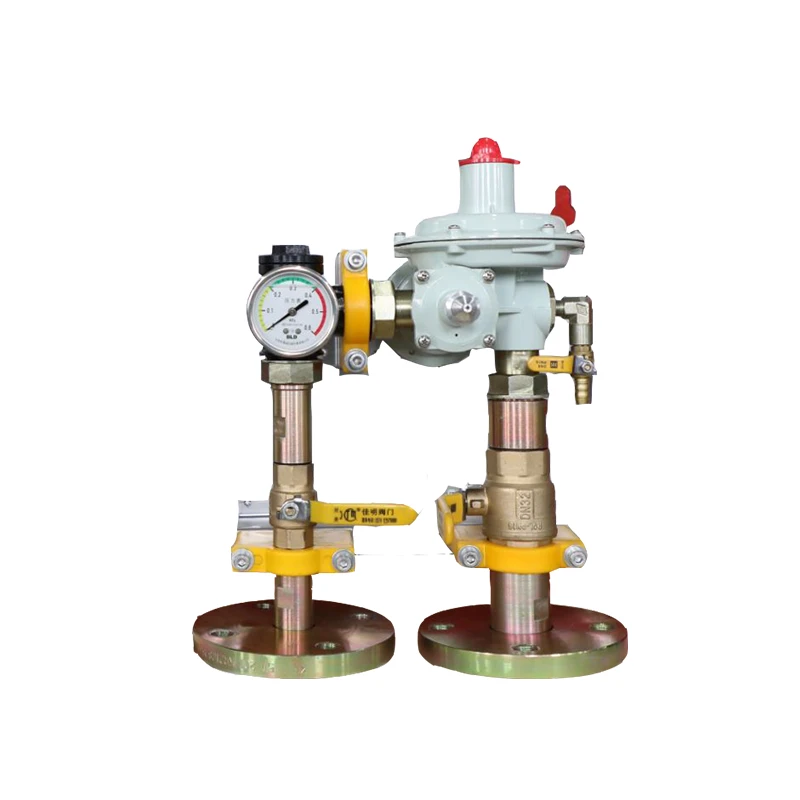
10 月 . 30, 2024 17:32
Back to list
natural gas pressure reducing valve
Understanding Natural Gas Pressure Reducing Valves
Natural gas is a crucial energy resource, utilized extensively for heating, cooking, and power generation. However, it is delivered through pipelines under high pressure, which must be regulated for safe and efficient use in residential and industrial applications. This is where natural gas pressure reducing valves (PRVs) come into play.
A natural gas pressure reducing valve is a device that automatically reduces the pressure of natural gas from the main pipeline to a lower, more manageable level before it reaches end-users or appliances
. These valves ensure that the gas pressure remains stable, regardless of fluctuations in the supply line pressure, thereby preventing damage to equipment and ensuring safety.How Pressure Reducing Valves Work
The operation of a PRV is relatively straightforward. It consists of a valve body, an adjusting mechanism, and a spring. As high-pressure gas enters the valve, it encounters a diaphragm that responds to pressure changes. When the inlet pressure rises above a preset limit, the diaphragm moves to close the valve partially, restricting the flow of gas and consequently reducing the output pressure. The calibrated spring applies a counteracting force, allowing fine adjustments to maintain the desired pressure level.
Types of Natural Gas Pressure Reducing Valves
There are several types of PRVs, including direct-operated valves and pilot-operated valves. Direct-operated valves are often simpler and suitable for lower flows and pressures, while pilot-operated valves are more advanced and preferred for higher pressure drops and larger flow rates. The choice of valve type often depends on the specific requirements of the application, including the inlet pressure level, desired outlet pressure, and flow rate.
natural gas pressure reducing valve

Applications of Pressure Reducing Valves
Pressure reducing valves find applications in various settings. In residential buildings, they regulate gas pressure for appliances like furnaces, water heaters, and stoves, ensuring they operate efficiently and safely. In industrial settings, PRVs are crucial for processes that require precise gas pressure control, such as in chemical manufacturing and power generation. Additionally, PRVs help gas utilities manage distribution networks by controlling pressure fluctuations that can occur due to demand changes or pipeline conditions.
Importance of Regular Maintenance
Like all mechanical devices, natural gas PRVs require regular maintenance to ensure they function effectively. Inspections should be conducted periodically to check for leaks, mechanical wear, and proper calibration. Failure to maintain a PRV can lead to safety hazards, including gas leaks or over-pressurization of equipment, which can result in costly damage or even catastrophic incidents.
Conclusion
Natural gas pressure reducing valves are essential components in the safe and effective transport of gas from pipelines to end-users. By regulating gas pressure, these valves protect appliances, maintain operational efficiency, and ensure safety in various applications. Understanding how these devices work and the importance of maintenance can help users optimize their performance and extend their lifespan, thereby contributing to a safer and more efficient use of natural gas. As the demand for energy continues to grow, the role of PRVs becomes increasingly vital in managing this critical resource.
Latest news
-
Unlocking The Quality Gas Pressure ReducersNewsNov.01,2024
-
The Role of Gas Pressure Reducing StationsNewsNov.01,2024
-
The Importance and Functionality of Safety Relief ValvesNewsNov.01,2024
-
The Essential Role of Safety Valves in Natural Gas ApplicationsNewsNov.01,2024
-
The Essential Role of Gas Pressure RegulatorsNewsNov.01,2024
-
Enhance Your Premium Gas FiltersNewsNov.01,2024

